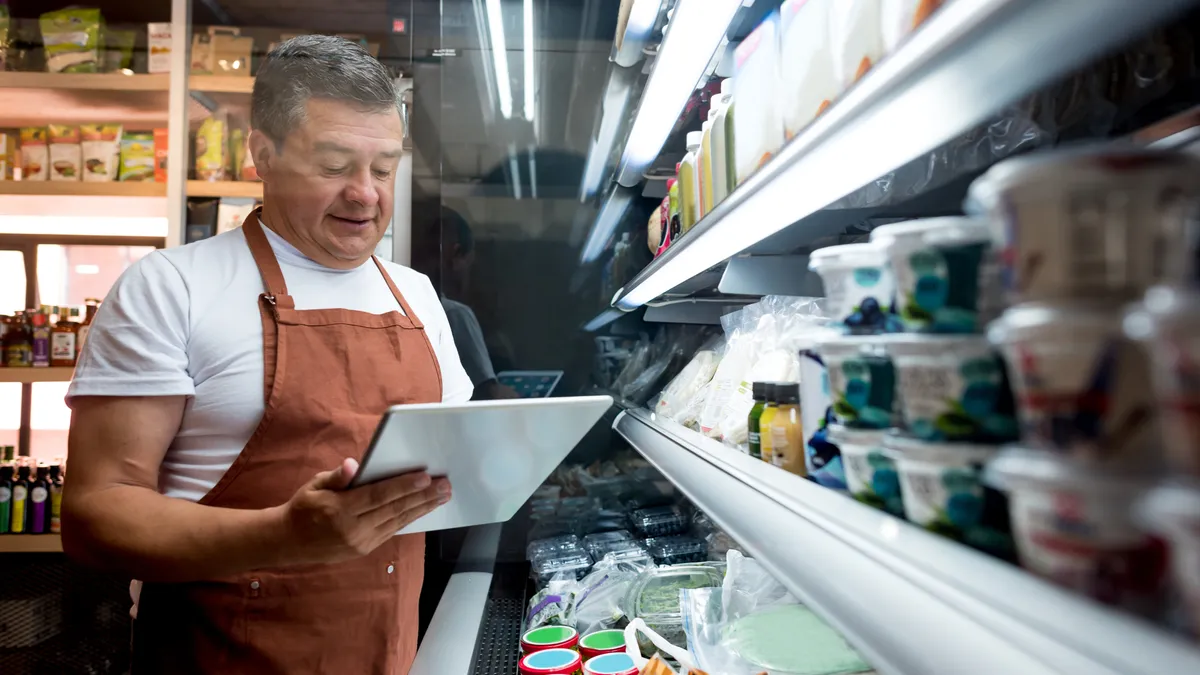Higher minimum wages, combined with the labor shortage are stretching restaurant labor budgets to a near breaking point, requiring you to optimize your restaurant labor costs now more than ever. Using your labor dollars as efficiently as possible is critical to your bottom line.
Using intraday polling, you can leverage data from your integrated POS system to make informed, same-day labor adjustments. However, making smart labor decisions throughout the day with intraday polling must be preceded by creating data-driven schedules and using POS integrations with your restaurant management software.
Start by scheduling intelligently
Many restaurant groups still create employee schedules using the previous week's schedule and even do it on paper. Smarter scheduling empowers your managers to create optimal schedules to ensure an excellent customer experience while controlling labor costs. With a custom labor model that provides scheduling "guardrails," all your store-level managers can expertly schedule employees.
Your hourly sales forecasts and custom labor model provides managers with a suggested number of employees for each hour of the day. By accessing average sales data from your POS and projecting that data forward over time, you can forecast your labor needs. When creating forecasts, analyze past labor costs by daily and hourly trends, not just weekly trends. Effective scheduling depends on analyzing your labor data and scheduling accordingly. Creating schedules in this manner requires fewer adjustments when you start using intraday polling.

Leverage POS integration with your operations and scheduling software
Intraday polling requires point-of-sale (POS) system integration. POS integration with your restaurant management software can transform your POS into an integral part of a data-driven restaurant labor cost strategy. POS integration is a streamlined connection between your restaurant management platform and your POS system. The connection enables your restaurant management software (accounting, inventory, scheduling, operations, payroll) to pull detailed data directly from your POS in real-time.
By automatically keeping track of key metrics, such as labor as a percentage of sales, you can optimize labor spending based on business trends. POS integration empowers your store-level managers to make immediate staffing decisions to control restaurant labor costs by automatically recording time entry details for different job titles. Accurate information about your labor benchmarks ensures your managers can make informed adjustments daily, instead of weekly or monthly.
POS integration can help you run your labor as efficiently as possible. Historical POS data can inform forecasting numbers, enabling your restaurant group's managers to create data-driven employee schedules that optimize labor spend. Additionally, a daily payroll accrual allows you to compare scheduled labor with actual numbers. Auto-created labor accrual journal entries from the POS import each day of the pay period provides true restaurant labor costs, so you can see the impact on your bottom line.
How does intraday polling impact restaurant labor costs?
Polling sales and labor data frequently allows your restaurant group to create effective strategies for labor cost control by leveraging labor allocation in relation to customer demand. With intraday polling updating sales and labor data every 15, 30, or 60 minutes, you can view accurate, up-to-date data for guidance on optimizing labor and improving your restaurant operations.
The live dashboard displays the forecasted sales and labor against the actual sales and labor data polled in from your daily sales summary. Store-level managers can analyze these metrics to provide more accurate predictions for the current day's sales and labor and then make critical staffing decisions.
It's extremely useful if you're using labor productivity metrics like sales per labor hour (SPLH). With SPLH goals and current labor costs, you can arm your store-level managers with up-to-date data from your POS so they can make informed decisions about breaks, cuts, and call ins. You can also show the variance between scheduled and actual overtime hours.
If you'd like near real-time sales and labor data in order to make impactful decisions to increase your bottom line, consider a restaurant management system that's integrated with your POS system. Restaurant365 is an all-in-one, cloud-based, restaurant-specific platform that incorporates accounting, inventory, scheduling, operations, payroll +HR, and reporting. In addition to POS integration, R365 is also integrated with your vendors and bank, facilitating automated accounts payable and bank reconciliation.
Request a demo of Restaurant365 today.










